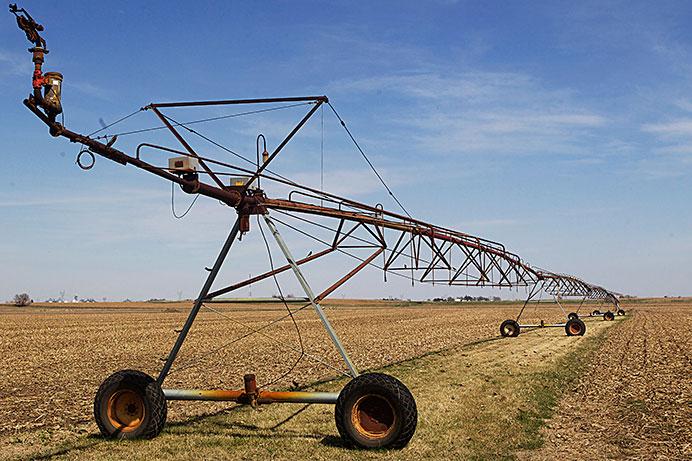As early spring weather patterns fluctuate, a much longer period of drought forces Johnson County farmers to adapt their practices ahead of the growing season in May.
Iowa is experiencing the harshest area of drought in the Midwest as one of only five states in the country classified as under “extreme drought,” according to the U.S. Department of Agriculture-sponsored drought monitor.
One of the counties nearly entirely covered in red, the map’s designated color for extreme drought, is Johnson County.
According to the Iowa Department of Agriculture and Land Stewardship, crop yields have decreased over the last year. For example, a 7 percent decrease in corn harvested for silage production was reported between 2022 and 2023.
According to Heartland Co-Op, a Des Moines-based farmer-owned cooperative, market prices for corn were steadily decreasing at the beginning of 2024, before hitting a low point in February. Now, prices are slowly climbing again.
Rebecca Vittetoe, a field agronomist for the Iowa State Extension Office, oversees multiple counties, including Johnson County. Vittetoe said the drought has persisted for almost four years.
Vittetoe said a way to adapt planting processes to the drought is to adjust the depth at which crops are planted. She said, for example, soybeans should not pass two or three inches to reach moisture. However, problems arise when water is too deep to reach for crops that also need to penetrate up and out of the soil.
In terms of general agriculture practices, she discussed that outside of applying water to the soil at the start of growing, there is a dependence on timely rains during the growing season.
Retaining water is incredibly important in the event of insufficient rainfall, Vittetoe said. She said the Poweshiek Water Association in Poweshiek County — about a 50-minute drive from Johnson County — issued orders to conserve rural water. The association supplies water to 7,600 individual meters around Iowa.
Additionally, she said one key practice is planning the elimination of cover crops, such as alfalfa or ryegrass — which are planted in fields to reduce erosion and maintain soil health — at the right time, so excess groundwater is not wasted on crops not grown during the regular growing season.
Travis Spevacek, a Johnson County farmer, said planning and awareness are key to seeing a healthy growing season, especially during drought.
The elimination of cover crops at the right time and rotating livestock from pasture to pasture to retain grass length in dry conditions are two examples Spevacek gave of practices made more important in a time of drought.
RELATED: Board of Supervisors fund dust control amid citizen concern
Spevacek said the drought has lowered his overall yields, but that no continual downward trend was evident.
The Johnson County Historic Poor Farm is home to Grow: Johnson County, a countywide nonprofit agricultural organization dedicated to providing fresh produce to residents experiencing food insecurity.
A representative of Grow, Claire Zabel, wrote in an email to the DI that droughts require a greater physical area of irrigation, which leads to a decrease in water pressure for every new area the water must reach.
Strategies such as hybrid-bred crops and using a no-till strategy — where farmland is not tilled to preserve water — are among the tools Grow and others in agriculture employ to preserve business during the drought.



